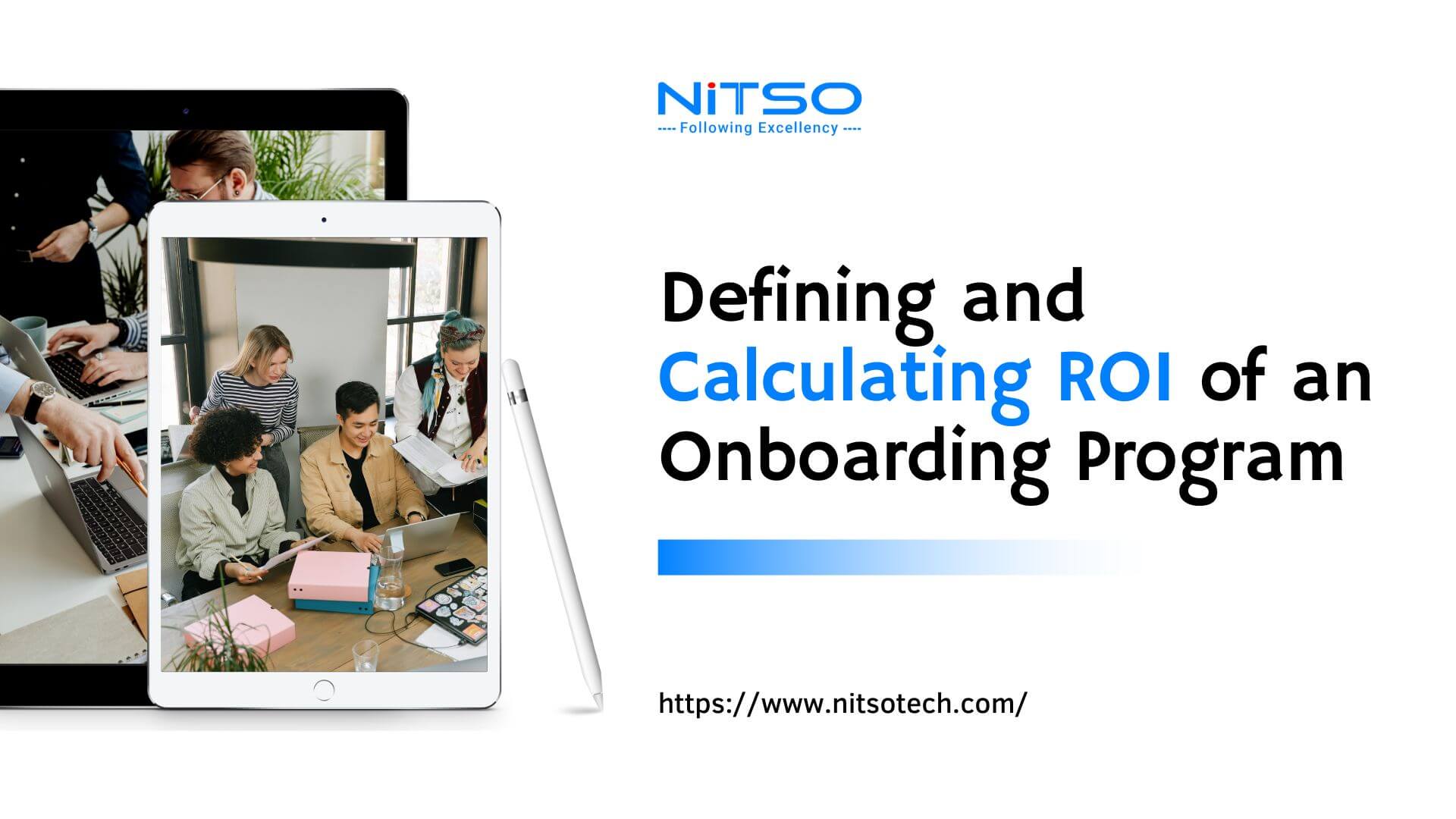What’s one of the most impactful investments an organization can make that pays dividends across the employee lifecycle? An effective onboarding program. Yet companies often neglect dedicating resources towards strategic onboarding due to competing priorities.
The key to capturing leadership’s attention and securing continuous improvement efforts is by demonstrating the tangible value onboarding drives through return on investment (ROI). Considering it costs tens of thousands of dollars to replace an employee, even minor reductions in early attrition rates save companies hard dollars.
However, defining and calculating ROI involves challenges like connecting metrics to specific business impacts. This article will break down an approachable framework for calculating and optimizing the ROI of onboarding programs—unlocking the ability to showcase value added and pinpoint areas needing refinement.
With an ROI mindset, companies can transform onboarding from a ‘check the box’ exercise into one that elevates performance across teams, pays dividends on retention, and demonstrates an impressive cost-benefit ratio. Let’s dive in.
Table of Contents
Benefits of Measuring Onboarding ROI
Calculating and tracking onboarding ROI brings several impactful benefits:
- Justify and secure funding for future investments by showcasing clear returns
- Identify the most and least impactful parts of onboarding programs based on financial contribution
- Uncover specific areas needing targeted improvement
- Provide visibility into progress over time as changes are introduced
- Enable data-driven decision-making on resource allocation and priorities
- Strengthen credibility by demonstrating onboarding’s strategic influence
Onboarding ROI conveys tangible value beyond theoretical benefits to both leadership and program managers. It spotlights the true effectiveness of onboarding as a long-term competitive differentiator.
Challenges of Measuring Onboarding ROI
However, quantifying onboarding success does present notable challenges including:
- Isolating the direct impact of onboarding programs beyond other factors like broader training, management support, etc.
- Consistently tracking long-term metrics like retention rates beyond just the first few months
- Getting alignment on calculation frameworks and simplifying assumptions
- Addressing the natural time lag for some metrics like productivity to fully emerge
- Securing engagement with managers on providing timely input
The onboarding process also demands careful change management as teams shift from activity-based or operations-focused mentalities into an ROI culture.
Yet the payoff for persevering through ambiguities can be monumental. Set clear expectations around limitations, provide reassurance through early wins, and reinforce the importance of embracing an ROI mentality.
Defining Onboarding Program Goals
The first step towards determining ROI is aligning all stakeholders on the actual goals of your onboarding program. Onboarding can span everything from orientation checklists to year-long mentoring programs. Regardless of scope, clearly define what outcomes you aim to achieve.
Common overarching targets include:
- Improving new hire retention rates – Reducing attrition after the significant hiring investment
- Accelerating time-to-productivity – Ramping new hires up to full speed quicker
- Increasing job satisfaction – Correlates strongly to engagement and tenure
- Cultivating cultural assimilation – Transmitting company values early on
With those broader objectives set, refine them into specific, measurable targets. Rather than a vague goal of “increasing retention,” set targets like:
- Reduce voluntary turnover of new hires by 15% year-over-year
- Improve 1-year retention rate from 80% to 90%
The best goals also directly map to business results. For example:
- Decrease average time-to-autonomy by 30% to drive higher staff utilization
- Improve customer satisfaction scores of new service agents by 40%
Anchoring goals to metrics tied to process efficiency, revenue gains, or cost savings makes calculating an eventual ROI equation easier. It also helps secure executive support by speaking the universal language of business impact!
Keep goals focused, realistic, and grounded in broader organizational objectives. The remainder of the ROI methodology depends heavily on defining—then achieving—the right onboarding goals from the start.
Article you might be interested in: Best Practices and Strategies for Onboarding
Metrics to Track ROI of an Onboarding Program
Once goals are established, identify what metrics will define success, guide decisions, and feed into the ROI equations.
Onboarding introduces several new data streams to leverage, including program efficacy metrics like hours of training completed, engagement indicators such as assignment completion rates, competency milestones achieved, and experience measures around satisfaction and sense of belonging.
Tie metrics directly to each established goal:
- Retention – Track turnover rates at various tenures and exit interview trends citing onboarding gaps. Survey job satisfaction and career perceptions.
- Productivity – Compare work output/quality versus tenure benchmarks. Gather manager feedback on-ramp speed. Calculate pipeline generation rates.
- Cultural Integration – Assess sentiment via pulse surveys, evaluate values understanding, and observe participation in social events.
The power is in the collective dataset generated, not any individual metric. Analyze metrics in aggregated bundles to identify correlations and patterns over time.
Maintain rigorous tracking with consistent cycles. And focus on quality insights versus quantity. The Robust, well-defined metrics fuel the next critical step – calculating the ROI itself.
Methods of Calculating ROI of an Onboarding Program
Determining onboarding ROI requires connecting the dots between defined metrics and tangible business value delivered. Build a financial model using the following:
Define Total Program Costs:
- Staff or contractor salaries dedicated to design program delivery
- Direct program costs like software, training development, materials, swag
- Facilities and overhead allocated to onboarding events
Estimate Returns
- Map metrics to demonstrate business impact – e.g. new hire ramp translated to $200,000 in incremental annual productivity gains
- Leverage existing unit economics – e.g. 5% better 90-day retention reduces estimated $30K per employee replacement costs
- Gut-check estimates against industry benchmarks/competitor data
Consider Alternatives
- Factor opportunity costs of NOT investing in improvements
- Account for other possible approaches to driving return targets
Account For Intangible Returns
- Note softer benefits like recognition, team rapport, workplace enthusiasm
Once costs and returns are prepared, combine them to calculate the ROI of an onboarding program. For example:
ROI = (Gain from Investment – Cost of Investment) / Cost of Investment
Example to calculate the ROI of an onboarding program:
Cost = $500K for an onboarding program
Gain = $750K from retention and productivity gains
ROI = ($750K – $500K)/$500K = 50% ROI
The result both highlights overall value added and enables further cost-benefit analysis guiding continual optimization. Tracking ROI over time spotlights the economic advantage strong onboarding delivers. Are your returns compelling?
Article you might be interested in: Onboarding Strategies For Your High-Impact Roles
Optimizing Based on Data and Trends
The cumulative metrics and ROI performance offer a compass to guide continuous onboarding enhancements.
By analyzing results, companies can:
Diagnosis Program Gaps
- Pinpoint where new hires are struggling – What milestones are most commonly missed? Where do managers observe the largest ramp time deltas?
- Identify parts of programs with low utilization – Are certain training modules routinely skipped?
Prioritize Opportunities
- Determine quick wins versus long-term initiatives – Does changing the focus of a module move the needle versus requiring a whole new program?
- Estimate implementation complexity – How extensive are changes to technology, processes, or capabilities needed?
Set Optimization Goals
- Establish clear targets for addressing high-potential gaps
- Define both qualitative and quantitative success metrics
Test Iterations and Refine
- Start small, measure localized impact
- Standardize on iterations demonstrating results
- Continue to monitor ROI influence
Ongoing Reviews
Ensure methodology keeps pace with changes in programs or business environments over time.
Let data refine onboarding into a high-ROI function delivering an exponential return.
Article you might be interested in: Why You Need to Incorporate Company Culture from Day One of Onboarding
Tips for Measuring ROI
Approaching onboarding ROI for the first time? Keep these best practices in mind:
Set Expected Returns Upfront
- Leverage industry averages, starter projections to establish targets
- Helps frame the scope of effort required to demonstrate the value
Isolate Impact
- Create new hire control groups running parallel onboarding programs
- Introduce staggered rollout by office location, role, or other filters
Incorporate Qualitative Feedback
- Gather first-hand perspective through focus groups, interviews
- Contextualize returns beyond strictly financial figures
Revisit Methodology
- Review costs, metrics tracked, and calculation models quarterly
- Confirm alignment with evolving organizational priorities
Long-Term Commitment
- Recognize multi-year effort to build analytics, achieve scale
- Patience and persistence pay significant dividends
While daunting initially, viewing onboarding through an ROI lens ultimately elevates overall strategic contribution. Demonstrate impact, secure buy-in across key stakeholders, and transform programs into high-performance competitive differentiators over time.
Conclusion
Viewing onboarding through an ROI lens elevates strategic contribution by demonstrating clear impact, securing buy-in across stakeholders, and enabling continual data-driven refinement.
While daunting initially, embracing an ROI mindset ultimately showcases the tangible value strong onboarding delivers across the employee lifecycle. The returns can transform programs into differentiating organizational assets.
Are you ready to take the first step and define your targets? The rewarding journey awaits.








0 Comments